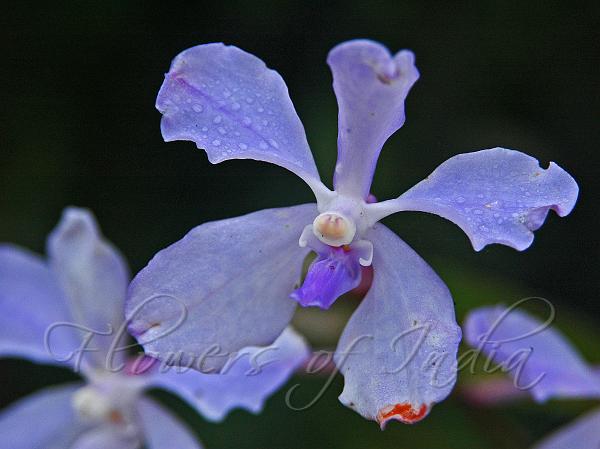|
| Blue Vanda |
|

|

| File size | 932424 |
| Original date | 12/18/06 7:34 AM |
| Resolution | 2048 x 1536 |
| Flash | Flash did not fire |
| Focal length | 105.0mm |
| Exposure time | 1/250s |
| Aperture | 5.0 |
| Focus Distance | |
| Metering Mode | Multi-segment |
| Camera make | NIKON CORPORATION |
| Camera model | NIKON D70 |
| Sensor type | OneChipColorArea |
|
|
|
Photo: |
Botanical name: Vanda coerulea Family: Orchidaceae (Orchid family)
One of the most popular asiatic orchids, Vandas are very demanded by its big,
blue/purple, long lived flowers.
Blue orchid is native to NE India where it grows at elevations ranging
from 2500 to 4000 feet in the Himalayan foothills. Botanist William Griffith’s
description of this unusual blue-flowered species in 1847 sparked much
excitement amongst orchid enthusiasts and hybridizers, who were eager to add
this rare plant to their collections. The resulting unsustainable collection
of plants for commercial markets led to rapid decimation of wild populations.
In order to protect remaining wild populations, intact habitat is being
protected and restrictions on international trade of Vanda coerulea have been
enacted. The name "Vanda" is derived from the Sanskrit name for the species
Vanda tessellata. Vanda coerulea is one of the few botanical orchids with blue
flowers (actually a very bluish purple; there are no truly blue orchids), a
property much appreciated for producing interspecific and intergeneric
hybrids. Some have flat, typically broad, ovoid leaves (strap-leaves), while
others have cylindrical (terete), fleshy leaves and are adapted to dry
periods. The stems of these orchids vary considerably in size; there are
miniature plants and plants with a length of several meters.
| Identification credit: Tabish | Photographed in Dimapur, Nagaland, Mizoram & Manipur. |
• Is this flower misidentified? If yes,